Rhinoceroses are magnificent creatures, among the largest land mammals on Earth. Despite their imposing size and prehistoric appearance, these animals typically prefer to avoid confrontation. However, when threatened or provoked, a rhino can transform from a peaceful grazer into one of nature’s most dangerous animals in seconds. Weighing up to 7,700 pounds and capable of reaching speeds of 35 miles per hour, a charging rhino is a serious threat to anyone in its path. Understanding the warning signs that precede a charge could quite literally save your life. Whether you’re a wildlife photographer, safari guide, conservation worker, or tourist, recognizing these 11 telltale indicators will give you precious seconds to react appropriately.
Understanding Rhino Behavior
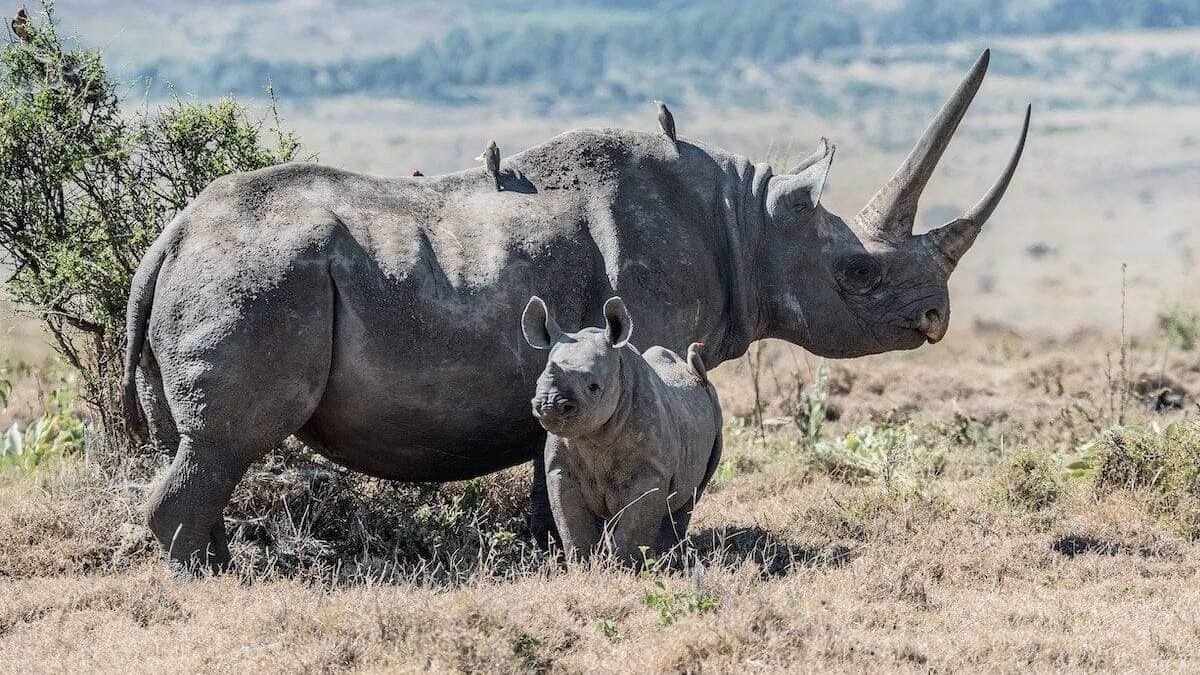
Rhinoceroses are generally non-aggressive animals that prefer to mind their own business. These massive herbivores spend most of their day grazing, wallowing in mud, and resting. Contrary to popular belief, rhinos have poor eyesight, only able to clearly see objects about 30 feet away. This visual limitation contributes significantly to their sometimes nervous and reactive nature.
However, what rhinos lack in vision, they compensate for with exceptional hearing and a remarkably keen sense of smell. These senses serve as their primary means of detecting potential threats in their environment. When a rhino perceives a threat, it follows a fairly predictable pattern of escalating behaviors before deciding to charge. Learning to recognize these behaviors is essential for safely observing these magnificent animals in the wild.
Sign #11 Ear Positioning and Movement
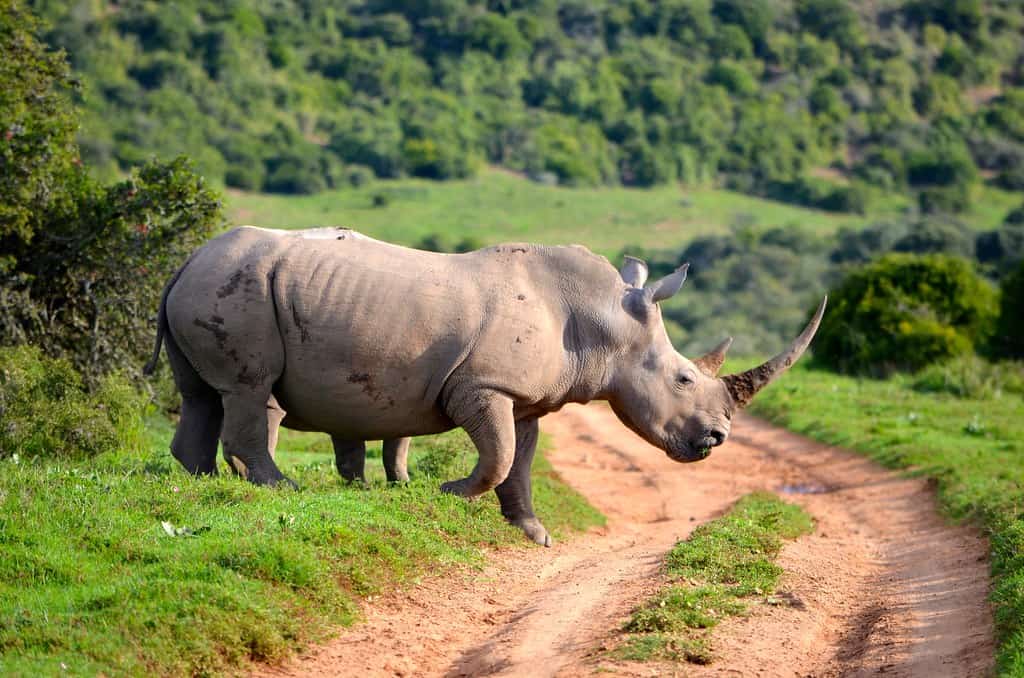
One of the earliest and most reliable indicators that a rhino is becoming agitated is a change in ear positioning. In a relaxed state, a rhino’s ears will move naturally and independently as they monitor their surroundings. However, when a rhino becomes alert to a potential threat, both ears will suddenly lock forward in the direction of the perceived danger. This focused ear positioning allows the animal to gather as much auditory information as possible.
If you notice a rhino’s ears stiffening and pointing directly at you, consider this an early warning sign. The ears may also begin to twitch or make rapid movements as the animal’s agitation increases. This ear behavior is often the first in a sequence of escalating warning signs and provides a crucial opportunity to begin creating distance between yourself and the animal before more serious threat displays begin.
Sign #10 Head Raising and Alert Posture
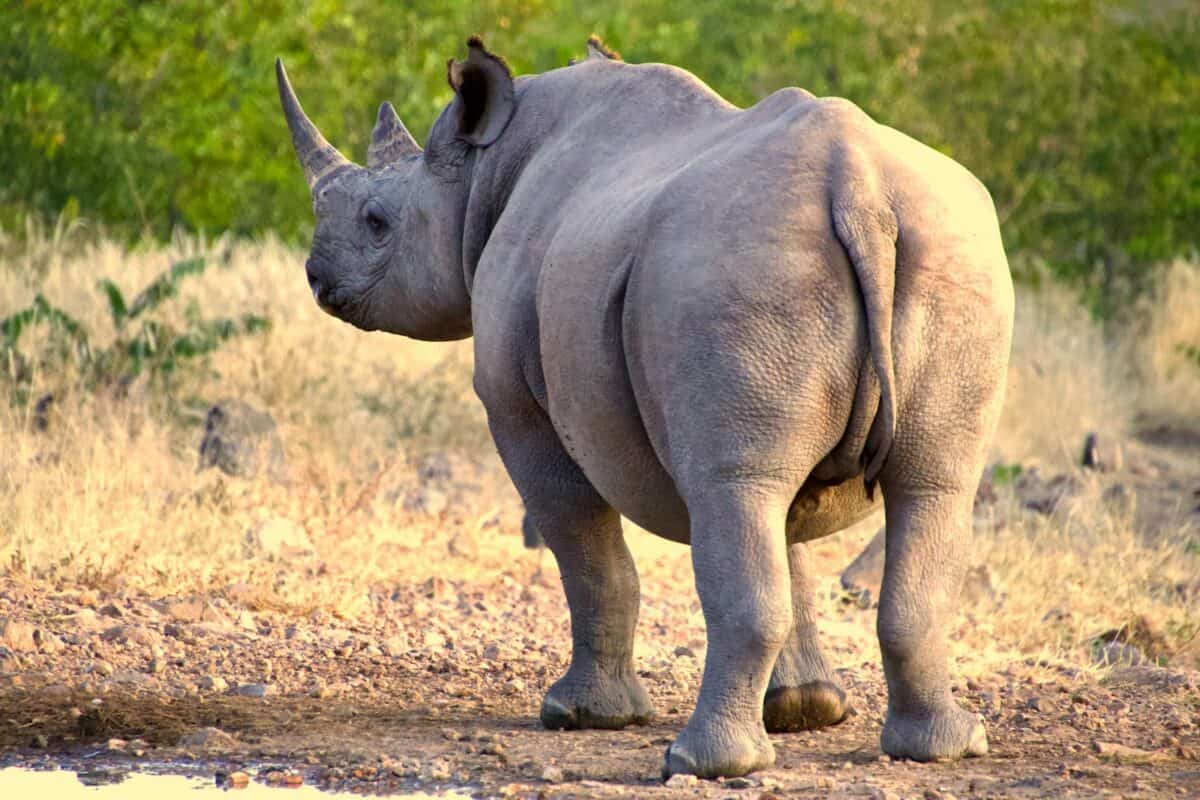
A relaxed rhino typically holds its head in a lowered position while grazing or moving casually. When something catches its attention, one of the first physical changes you’ll observe is the rhino raising its head high and adopting an alert posture. This elevated head position serves two purposes: it improves the animal’s ability to detect scents carried by the wind and provides a better vantage point for its limited vision to assess potential threats.
This alert posture is often accompanied by the rhino becoming completely still, sometimes even holding its breath momentarily to better focus on detecting sounds or smells. If you observe a rhino suddenly interrupt its feeding or walking to raise its head and freeze in place while oriented toward your position, take this as a serious sign that you’ve been detected and the animal is evaluating whether you represent a threat. This is an optimal moment to begin slowly and quietly increasing your distance from the animal.
Sign #9 Foot Scraping and Ground Pawing
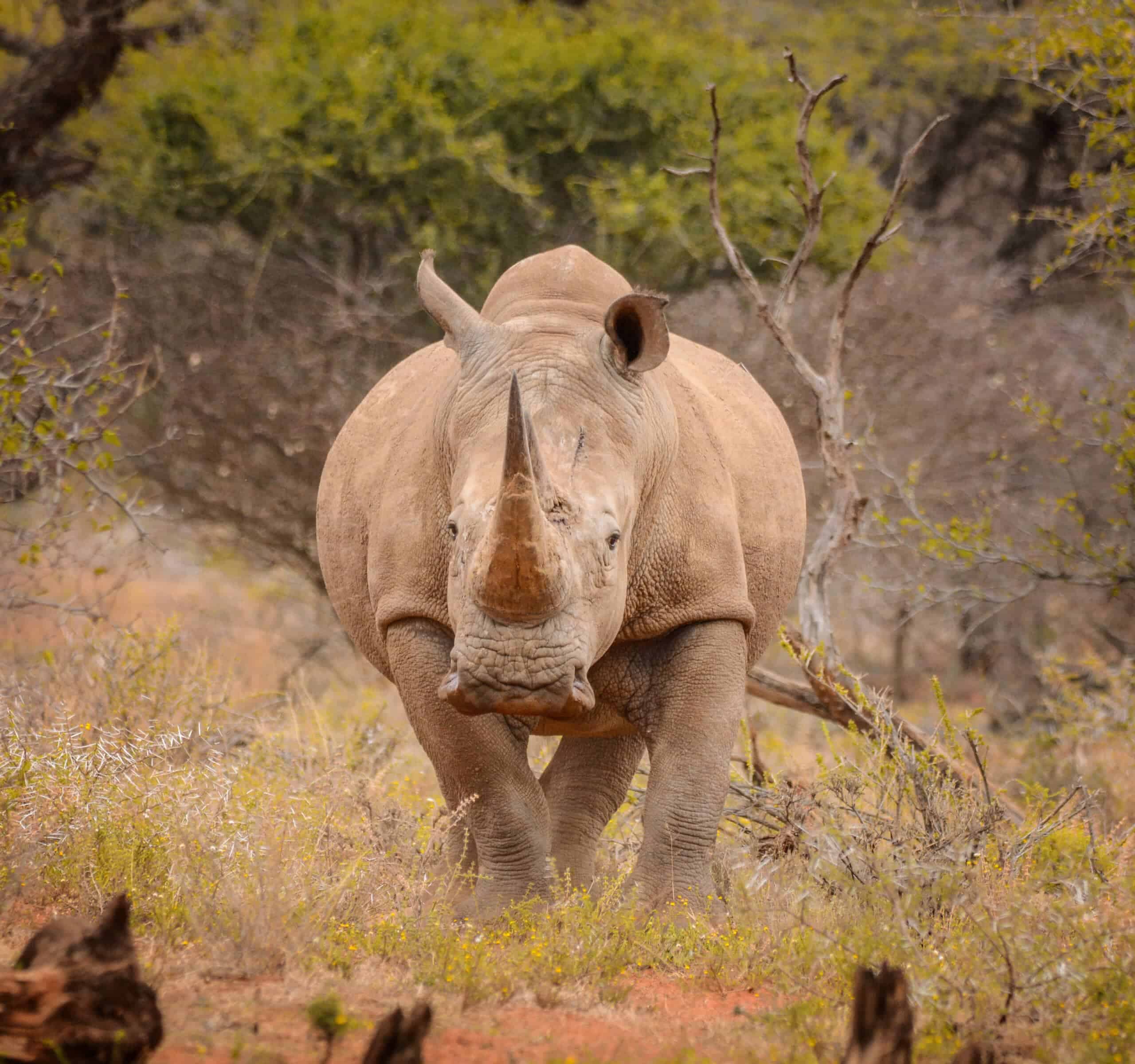
As a rhino’s agitation increases, it often begins to exhibit more active physical behaviors that serve as both stress relief and warning displays. One distinctive behavior is foot scraping or ground pawing, where the rhino will repeatedly drag one of its front feet backward through dirt or mud, creating furrows in the ground. This behavior is comparable to a bull pawing before a charge and serves as both a visual warning and a way for the rhino to display its strength.
The intensity and frequency of this ground pawing can provide valuable information about the rhino’s escalating threat level. Occasional, lighter scraping suggests moderate agitation, while vigorous, repeated pawing that kicks up significant amounts of dust indicates a highly agitated animal that may be approaching the decision to charge. This behavior is particularly concerning when combined with other warning signs such as head tossing or snorting, as it suggests the rhino is moving from assessment into a more active response phase.
Sign #8 Snorting and Vocal Warnings
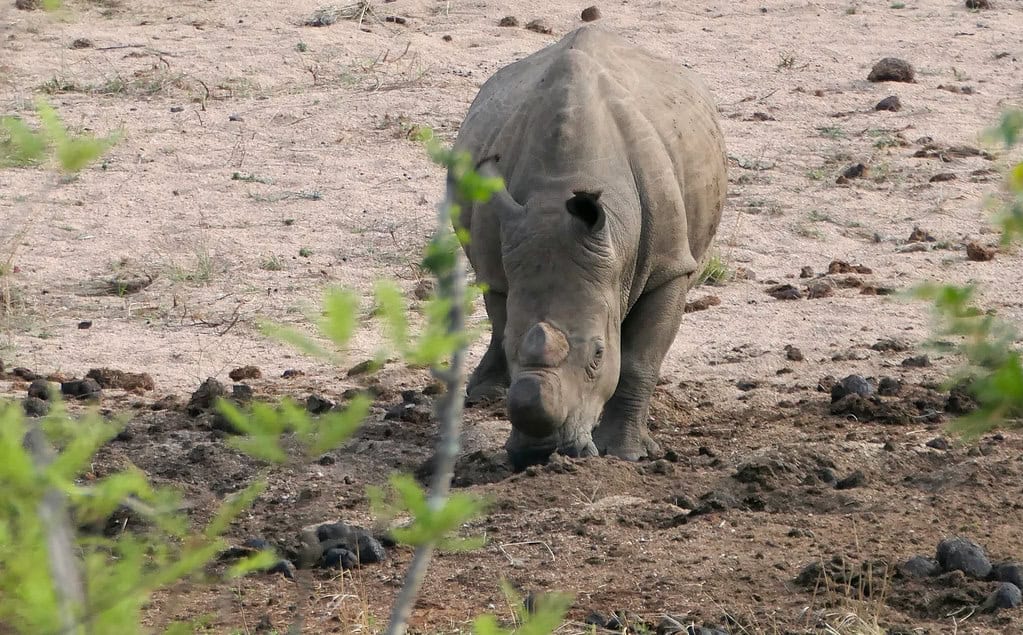
Rhinoceroses have a surprisingly varied vocal repertoire, and they use specific sounds to communicate agitation and warning. The most recognizable pre-charge vocalization is a loud, forceful snorting sound that often comes in repeated bursts. These snorts are created when the rhino forcefully expels air through its nostrils and are unmistakable auditory warnings that the animal is feeling threatened. Beyond simple snorts, an increasingly agitated rhino may also produce low-pitched growls or even high-pitched squealing sounds.
The volume and frequency of these vocalizations typically increase as the rhino’s agitation escalates. An occasional, softer snort may indicate curiosity or mild concern, while loud, repeated snorting combined with head movements indicates serious agitation. These sounds serve as the rhino’s way of telling you that your presence is unwelcome and that you should retreat immediately. Wildlife experts emphasize that these vocal warnings should never be ignored, as they’re often among the final alerts before a charge begins.
Sign #7 Head Swinging and Tossing

A particularly concerning pre-charge behavior is when a rhino begins swinging or tossing its massive head from side to side. This lateral movement is a clear indication of significant agitation and serves multiple purposes for the animal. The head swinging helps the rhino better scan its surroundings with its limited vision while also serving as an impressive visual display of the size and power of its formidable horn. For white rhinos, which can have a front horn up to 5 feet long, this display is particularly intimidating.
The intensity and speed of the head swinging provide important clues about how close the rhino might be to charging. Slower, more deliberate side-to-side movements may indicate the rhino is still assessing the situation, while rapid, aggressive head tossing suggests an animal that is preparing for a potential charge. When this behavior is observed, particularly in combination with foot scraping and vocalization, the rhino is communicating extremely clear warnings that should prompt immediate but measured retreat actions by observers.
Sign #6 Tail Position and Movement

While a rhino’s ears, head, and feet provide obvious warning signs, the tail position offers another crucial indicator of the animal’s emotional state. In a relaxed rhino, the tail typically hangs naturally with occasional, casual swishing to deter insects. However, as a rhino becomes increasingly agitated and prepares for a potential charge, the tail position and movement pattern change significantly. An agitated rhino will typically raise its tail and hold it in a stiff, upright position.
Even more concerning is when this raised tail begins to swish rapidly or twirl in circular motions. This heightened tail activity is often one of the final warning signs before a charge commences. The tail positioning serves as both a visual warning to potential threats and as a signal to other rhinos in the area. Wildlife guides emphasize that a stiffly raised tail combined with rapid movement should be interpreted as an imminent threat indication, particularly when observed alongside other warning behaviors like snorting and head tossing.
Sign #5 Mock or False Charges

One of the most heart-stopping warning behaviors a rhino may display is the mock or false charge. During this display, the rhino will make a short, sudden rush forward—sometimes covering 10-20 feet—before abruptly stopping or veering off to the side. These false charges serve as a rhino’s ultimate warning, essentially communicating “this is what will happen if you don’t leave immediately.” False charges are characterized by their brevity and by the rhino maintaining some distance from the perceived threat.
It’s crucial to understand that while many rhino charges begin as mock charges, they can transition into full charges if the threat persists or if the rhino becomes increasingly agitated. Wildlife experts note that during a mock charge, the rhino is making a final assessment about whether a full charge is necessary. Your reaction during this critical moment matters significantly—any sudden movements or loud noises might trigger the transition from mock to genuine charge. However, standing completely still isn’t advisable either, as it may communicate to the rhino that its warning has been ineffective, potentially escalating the situation.
Sign #4 Direct Orientation and Locked Focus

When a rhinoceros perceives something as a potential threat, it will deliberately orient its body to face the object of concern directly. Despite their poor eyesight, rhinos have excellent directional hearing and smell, allowing them to precisely locate the source of disturbance. This direct orientation is significant because it positions the rhino for the most efficient charge path if it decides to attack. A rhino that has squared its body directly toward you and remains fixated despite minor movements is displaying serious concern.
This locked focus becomes particularly alarming when combined with a lowered head position that aligns the horn for potential impact. Conservation experts who work closely with rhinos note that this direct orientation with focused attention rarely breaks until the rhino has either determined there is no threat or has decided to take action through a mock or real charge. If you observe a rhino maintaining this direct orientation toward you for an extended period, particularly while exhibiting other warning signs, it’s essential to begin creating distance while avoiding sudden movements that might trigger an immediate charge response.
Sign #3 Defecation Behavior
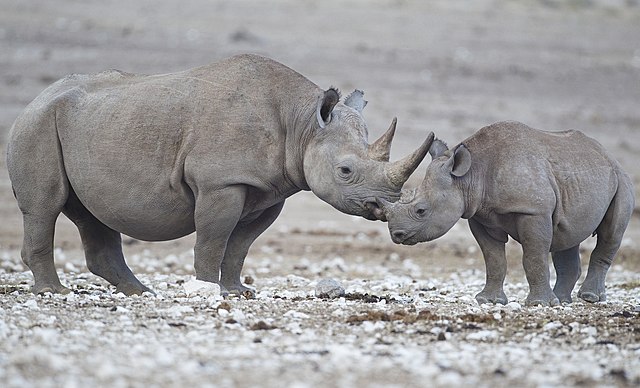
A less commonly discussed but significant pre-charge indicator is a rhino’s defecation behavior. When becoming agitated or preparing for a confrontational interaction, rhinos often engage in what biologists call “territorial marking” through deliberate defecation. Unlike normal elimination, this behavior is characterized by the rhino backing up to a specific location, often a prominent bush or tree, and forcefully spraying dung while kicking and scattering it with its hind legs. This behavior creates a visual and olfactory marker that communicates the rhino’s agitation and territorial claims.
What makes this behavior particularly relevant as a warning sign is its timing and context. A rhino that interrupts its normal activities to engage in this territorial marking when it detects your presence is demonstrating significant concern or agitation. Research has shown that this behavior often precedes more direct confrontational displays by several minutes, making it an early warning sign that the rhino is becoming increasingly uncomfortable with your presence. Safari guides are trained to recognize this behavior as a signal to begin creating distance between their vehicles and the animal before more serious warning signs emerge.
Sign #2 Behavior of Nearby Animals
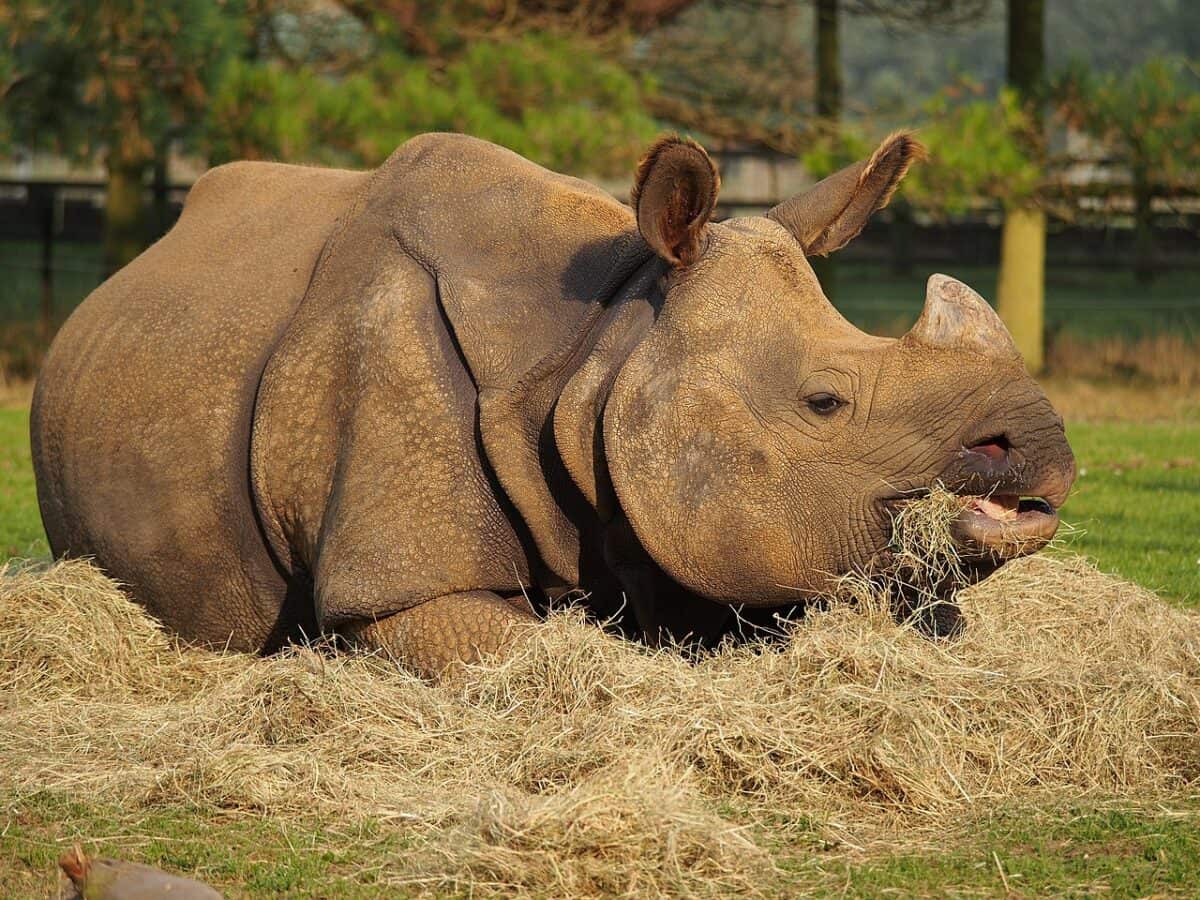
Sometimes the most valuable warning signs come not from the rhino itself but from the behavior of other animals in the vicinity. Rhinoceroses often have symbiotic relationships with birds like oxpeckers or egrets that perch on their bodies to feed on parasites. When a rhino becomes agitated and prepares for potential charging, these birds typically take flight immediately, responding to subtle muscle tensions and movements that human observers might not initially detect. Similarly, nearby grazing animals like zebras, antelopes, or warthogs will often become alert and begin moving away well before a rhino’s agitation becomes obvious to human observers.
This “early warning system” provided by other wildlife can give crucial extra seconds of preparation time. Experienced safari guides pay close attention to these ecological relationships and train themselves to notice sudden changes in the behavior of birds and mammals near rhinos. If you observe birds suddenly flying off a rhino’s back or nearby grazers becoming alert and moving away while looking toward the rhino, consider this an indirect but highly reliable warning sign that the rhino is becoming agitated. This information is particularly valuable because it often precedes the more obvious physical warning signs by valuable seconds.
Sign #1 The Pre-Charge Stance
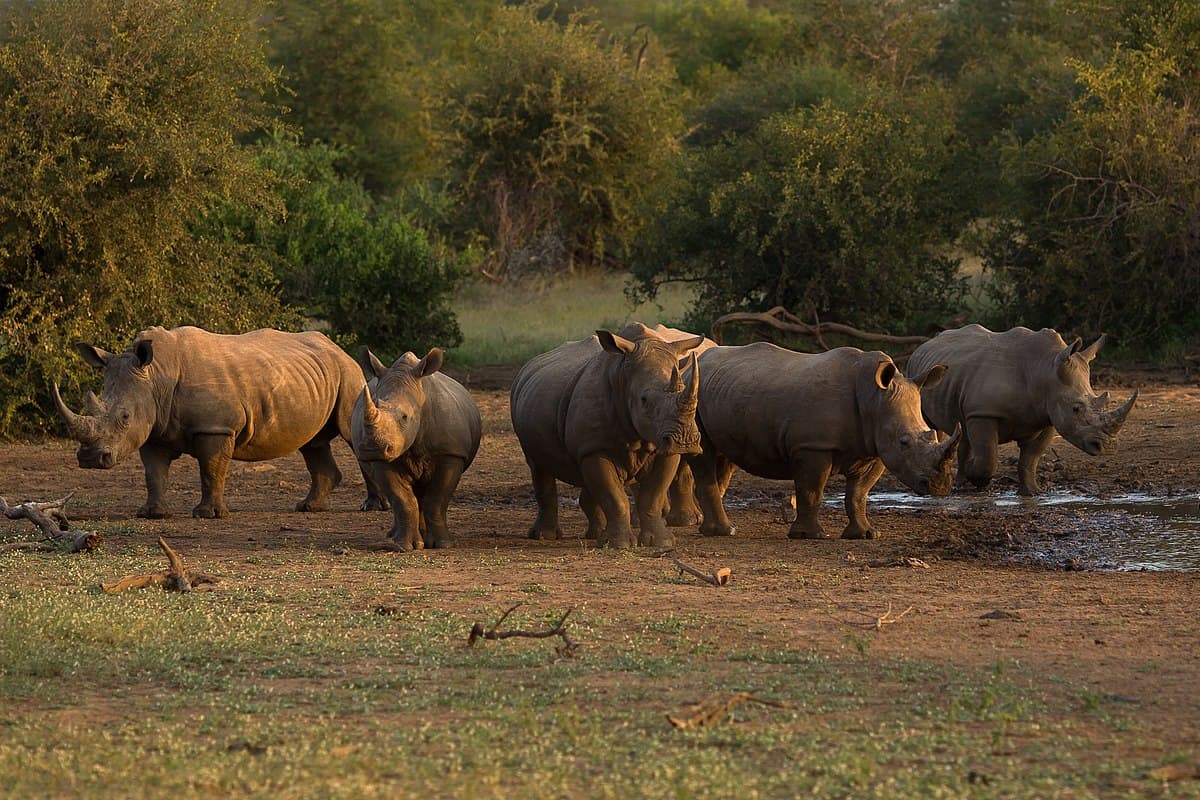
The final and most critical warning sign before a full charge is what experts call the “pre-charge stance.” In this position, the rhino lowers its head significantly, positioning the horn for maximum impact, while simultaneously widening its stance for better launch stability. The animal’s entire body becomes visibly tensed, with muscles clearly defined beneath the skin as it prepares for the explosive forward movement. The rhino’s gaze becomes intensely fixed, and breathing patterns change to short, powerful bursts that prepare its body for the immense exertion of a charge.
When a rhino adopts this stance, a charge is imminent within seconds. Unlike earlier warning signs which may persist for minutes, the pre-charge stance typically lasts only 2-3 seconds before the animal launches forward. At this point, the time for gradual retreat has passed, and immediate evasive action becomes necessary. Wildlife experts recommend seeking substantial cover like large trees or boulders if available, or in open areas, preparing to dodge at the last moment by moving sharply perpendicular to the rhino’s charge path, utilizing the animal’s poor turning ability and momentum against it. Understanding this final warning sign and having a pre-planned response can be the difference between safety and serious injury when all earlier warnings have been missed or ineffective.
Safety Measures and Response Strategies
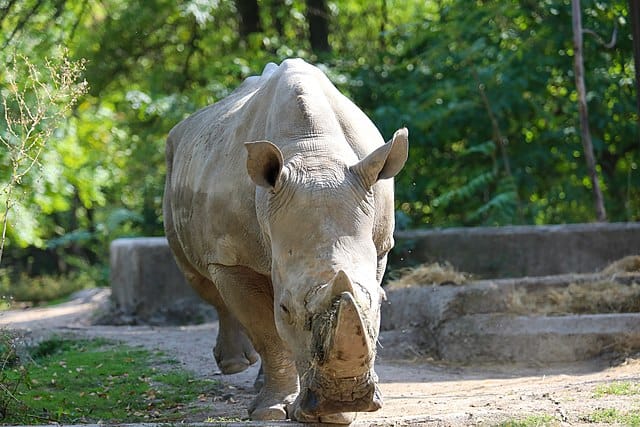
Understanding the warning signs of a rhino charge is only valuable if accompanied by appropriate response strategies. Wildlife experts emphasize that prevention through respectful distance is always the best approach. When observing rhinos in the wild, maintain a minimum distance of 100 meters (about 328 feet) and always ensure you have an escape route or substantial cover nearby. If you’re in a vehicle, keep the engine running and be positioned for a quick departure if needed. For those on foot, always be accompanied by experienced guides who understand rhino behavior and carry appropriate deterrents.
If you observe early warning signs like ear positioning or head raising, begin slowly increasing your distance without making sudden movements or loud noises. For intermediate warnings like snorting or foot scraping, more deliberate retreat is necessary while maintaining awareness of the animal’s position. In the case of a mock charge or pre-charge stance, seek immediate substantial cover behind large trees or rocks. If no cover is available and a charge is imminent, experts recommend waiting until the last possible moment before moving sharply perpendicular to the rhino’s path, as their poor eyesight and momentum make quick turns difficult. Remember that rhinos, despite their aggression when threatened, are not predators seeking to hunt humans—their goal is typically to remove a perceived threat from their territory.
Conservation Considerations and Ethical Viewing

Understanding rhino behavior isn’t just about personal safety—it’s also crucial for the conservation of these magnificent but threatened animals. All five rhino species face significant conservation challenges, with three species (Javan, Sumatran, and Northern White) critically endangered. Stress from inappropriate human interactions can impact rhino health, breeding success, and natural behaviors. By recognizing warning signs early and maintaining appropriate distances, wildlife viewers help ensure these animals experience minimal disruption to their natural behaviors.
Ethical viewing practices include always following guide instructions, maintaining quiet observation, never attempting to attract a rhino’s attention, and reporting any signs of poaching or harassment to authorities immediately. When rhinos don’t need to waste energy on defensive behaviors or territorial displays, they can focus on essential activities like feeding, mating, and caring for young. By becoming educated about rhino behavior and sharing this knowledge with others, wildlife enthusiasts contribute meaningfully to conservation efforts. Remember that every respectful wildlife encounter helps build public support for protecting these incredible animals for future generations to appreciate and study.
Conclusion:
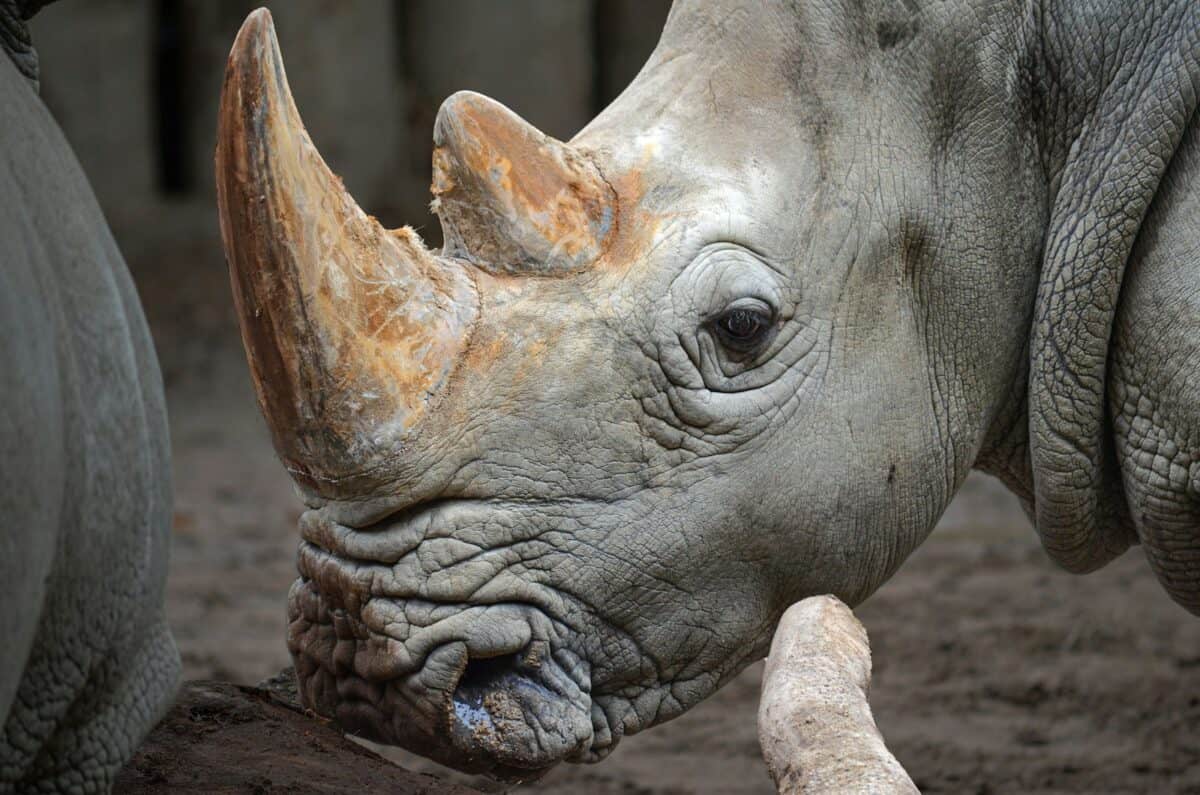
Rhinoceroses are magnificent creatures deserving of our respect and protection, but their size, strength, and territorial nature demand careful observation. The 11 warning signs outlined in this article—from ear positioning and head raising to the pre-charge stance—provide a comprehensive guide to understanding when a rhino is feeling threatened and may be preparing to charge. By recognizing these signals early, wildlife observers can take appropriate action to defuse potentially dangerous situations while minimizing stress to these magnificent animals. Understanding rhino behavior isn’t just about safety; it’s about fostering coexistence with one of Earth’s most impressive living species.
As conservation efforts continue around the world to protect rhino populations from poaching and habitat loss, responsible wildlife viewing becomes increasingly important. Every peaceful encounter between humans and rhinos helps build the case for their protection and creates advocates for their survival. By learning to read rhino body language and respecting their space and boundaries, we demonstrate our commitment
- 11 Signs a Rhino Is About to Charge - August 9, 2025
- 10 Common Chicken Behaviors and What They Mean - August 9, 2025
- 14 Creatures That Can Freeze and Thaw Back to Life - August 9, 2025

